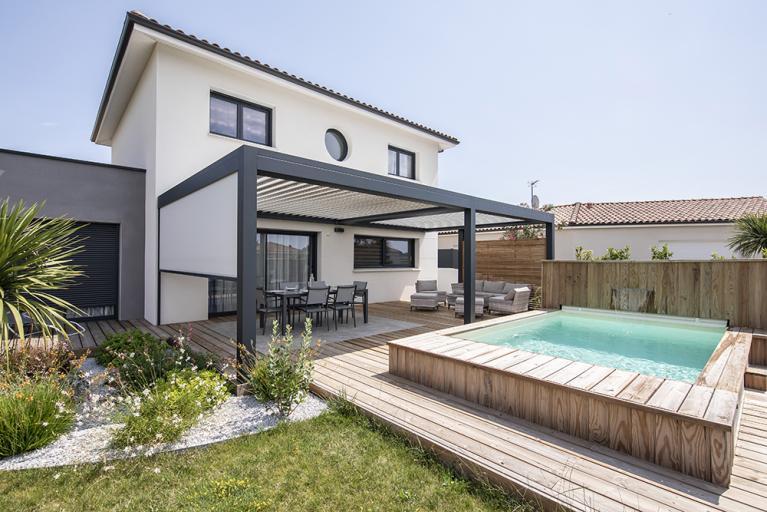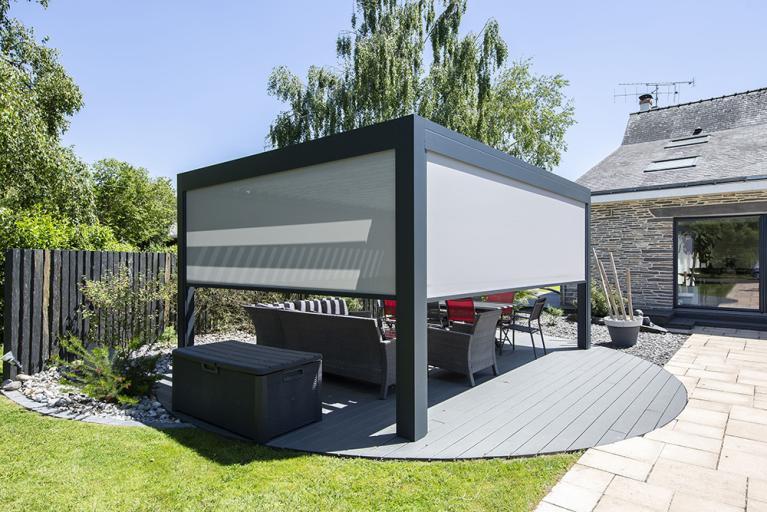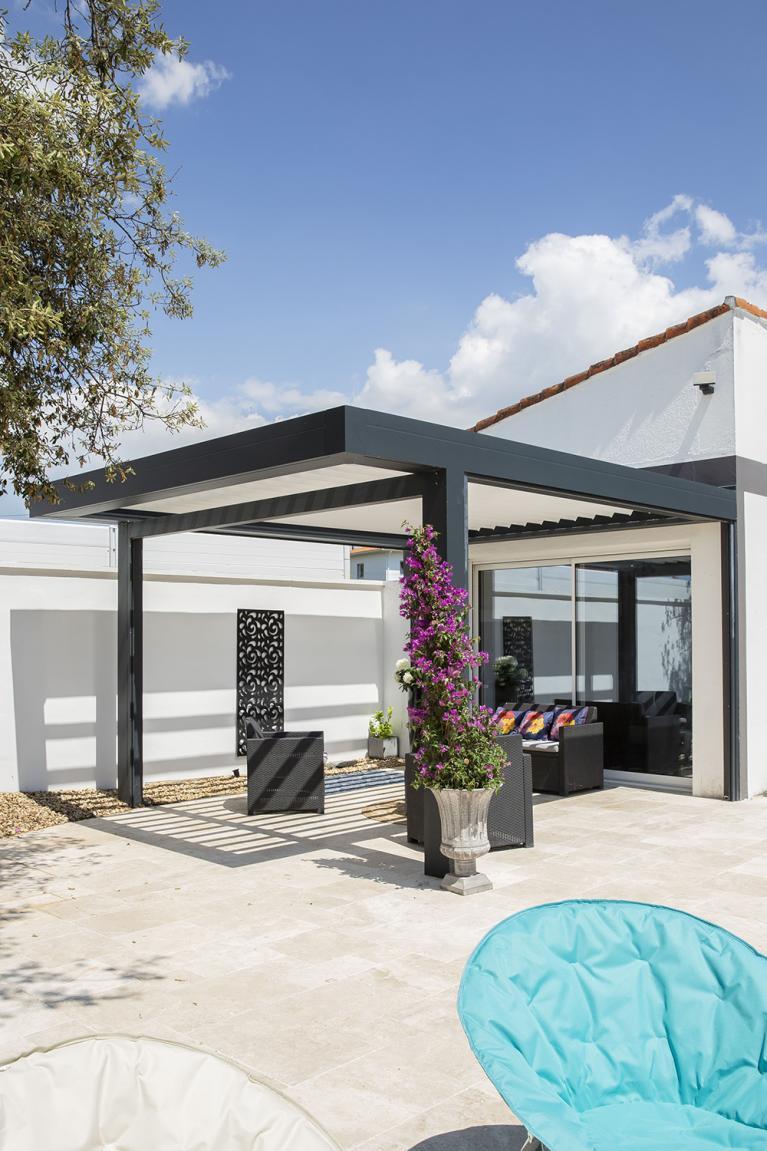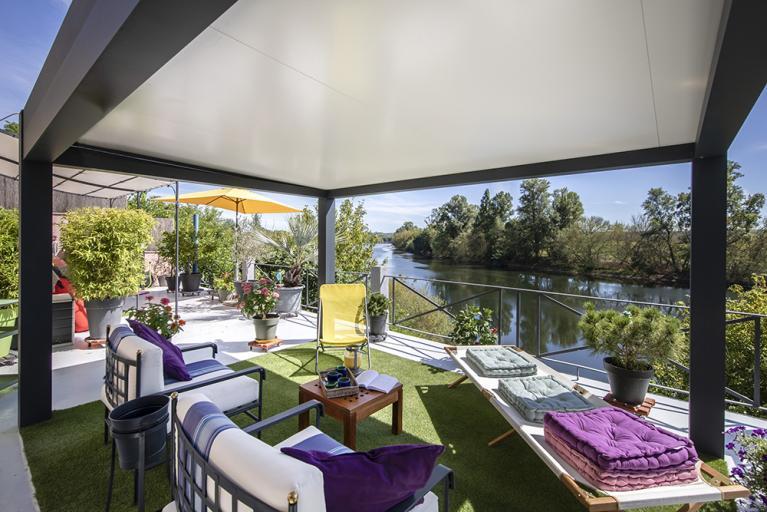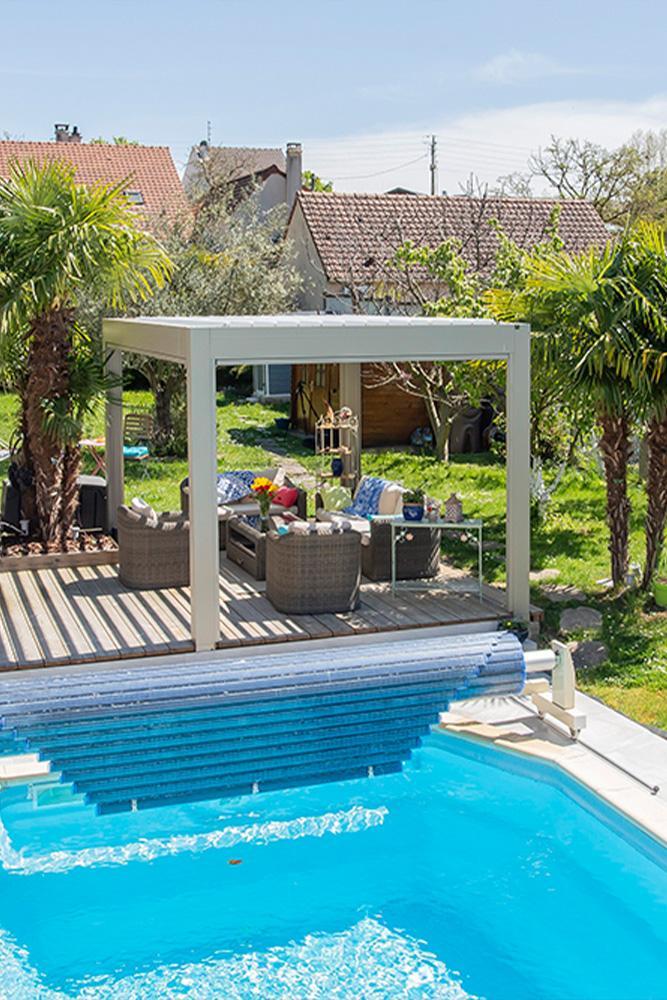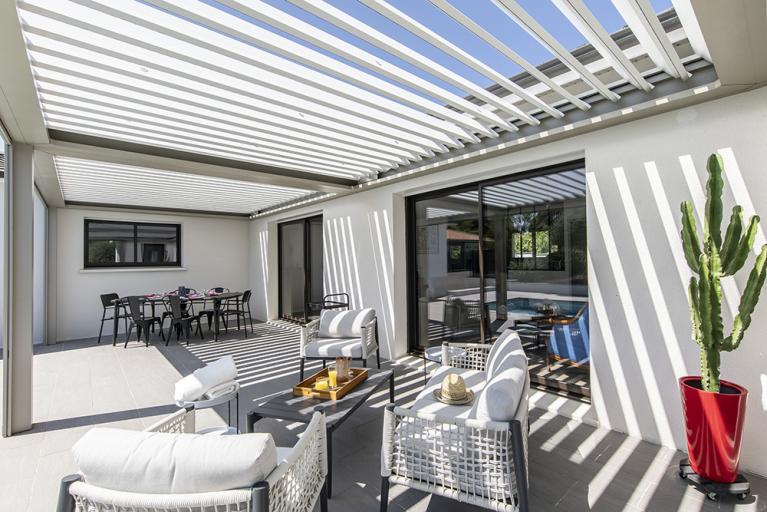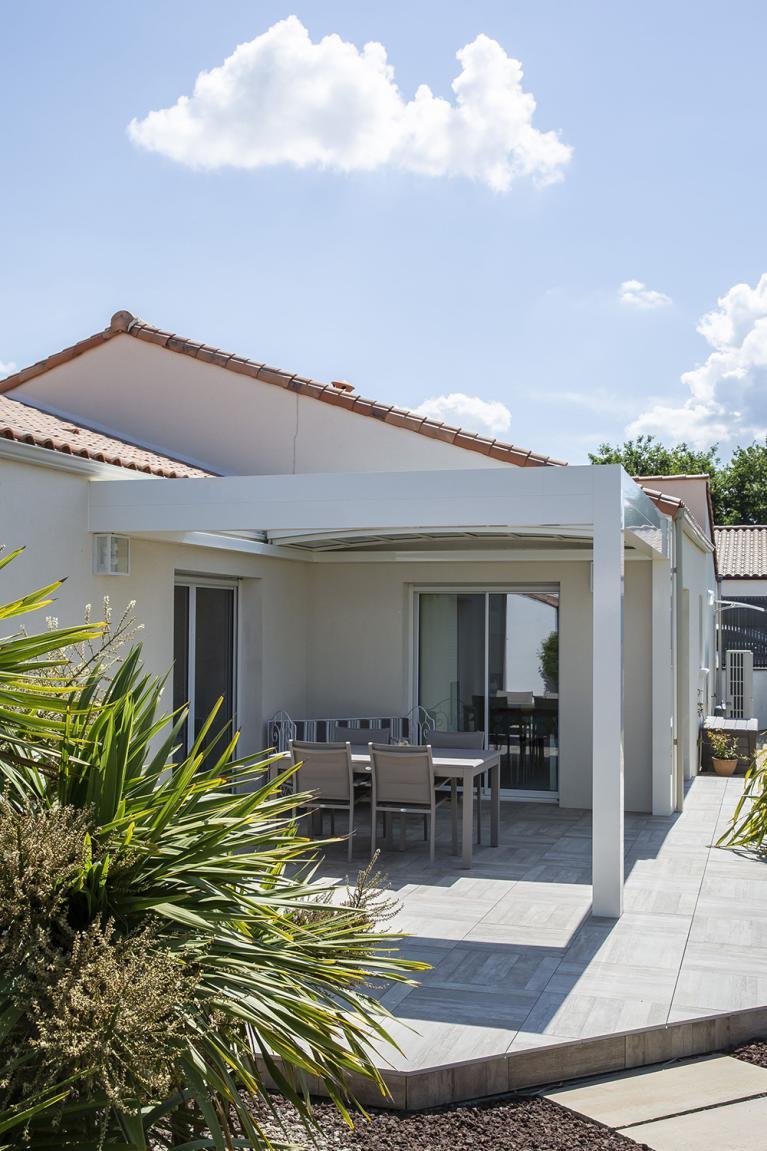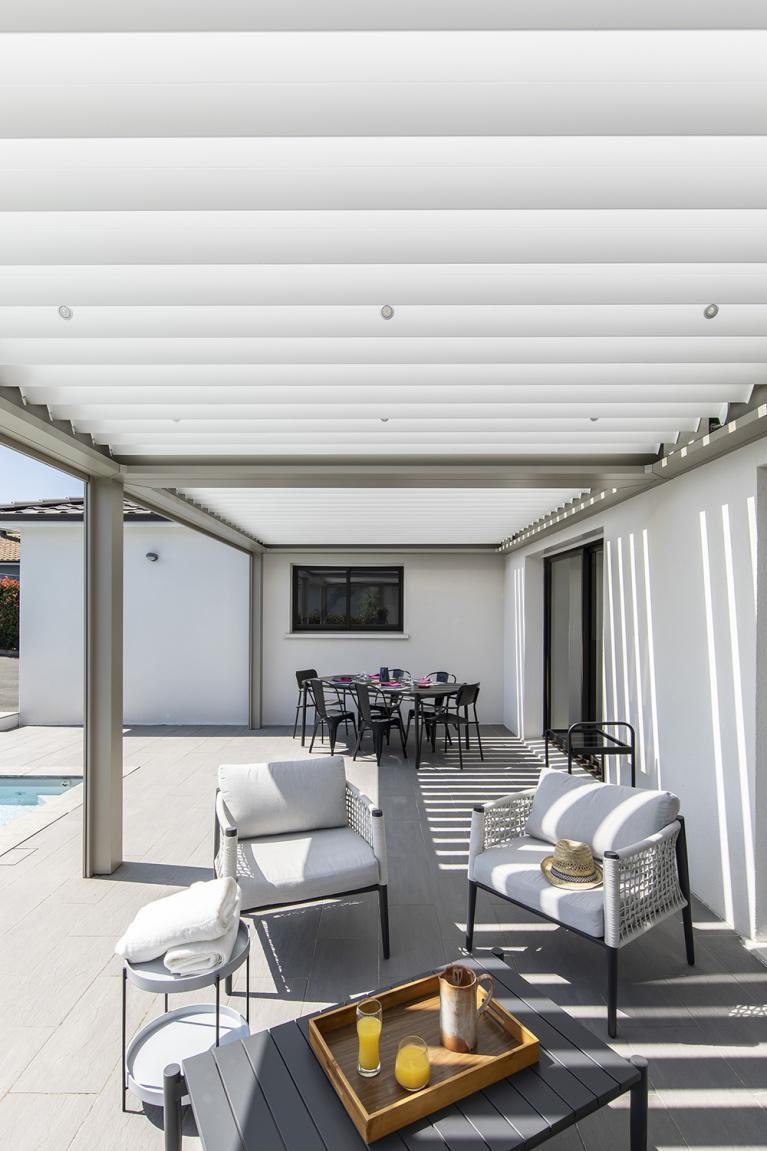What is an awning and how to choose one?
An awning is a small roof that protects you from the rain. In this category, you'll find awnings, which are placed over a front door, but also larger elements, similar to pergolas. Find out more about awnings to help you make the right choice.
Why install an awning?
With an awning, you can stay outside in a sheltered environment. Under its roof, it's impossible for the rain to get to you. It's just as useful during periods of strong sunshine, allowing you to enjoy a shaded area at all times. So it can be used all year round, whether temporarily or for longer periods.
The awning is particularly easy to install, because it is based on a minimal structure. Its roof is self-sufficient. It will only be supported by pillars if you want to extend it, for example to cover the terrace. So the work involved in erecting it is minimal.
The awning is first and foremost practical, but it also gives the house an aesthetic edge by covering the outside front.

What does an awning look like?
You can recognise an awning by its roof, which is more or less narrow. Unlike a bioclimatic pergola, its roof is not adaptable. However, it can take on a number of different appearances: you'll find one with tiles to match the style of more traditional houses, or with glass or polycarbonate surfaces for a more modern design. The roof may or may not be adorned with decorative elements. Its framework can be made of wood or metal. It can run along an entire wall, or be installed just next to a door.
The narrowest models provide shelter for just one person, but the width and length of the awning can be adjusted. It can cover an entire terrace. In this case, it is bounded by fixed pillars that support the roof. This is known as a pergola awning.
Most awnings are attached to buildings. If you're looking for a freestanding roof, to be placed in the garden to shelter a vehicle or a separate terrace area, you're better off with a porch or an arbour, for example.
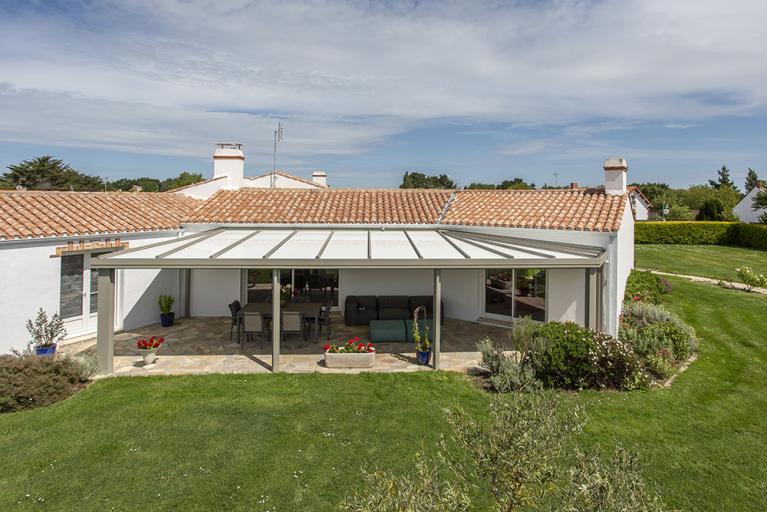
How can I benefit from an awning?
An awning isn't just for getting home out of the rain. In its narrower version, you can also leave shoes and umbrellas outside so as not to dirty the inside of the house. But you can also put in a plant that appreciates the shade, to create a reception area full of greenery.
At its widest, the awning is a terrace shelter. It makes it easier to stay outside even when the weather isn't as kind as you'd like. Garden furniture is protected from the rain and the sun. Its roof makes it useful all year round: rain, snow and hail won't reach the edges of the house.
The awning is appreciated for its versatility. You can add lighting to suit your taste, so you can enjoy your patio even after dark. However, if you're looking for more flexible protection for your terrace, you could opt for a bioclimatic pergola: its roof can be adjusted to suit the amount of sunshine you want. Under an awning, light will always be more limited. This can be a very useful detail, particularly for a front that is too exposed to the sun. An awning can be used as a permanent replacement for an awning, providing shade even inside the house.
Read all the articles in the magazine
You have a project?
Would you like a personalised 3D study and a free quotation? Contact us by clicking below.
AKENA is...
Over 40 years of experience
Founded in 1981 by one man, we now have more than 500 employees dedicated to making your project a success.
Made in France
A historic site and two factories covering more than 25,000 m² in Dompierre-sur-Yon in the Vendée region (85)
Innovative and tailor-made products
At AKENA, we are brimming with new ideas to improve and enhance our products.
The European leader in conservatories, pergolas...
But not only! AKENA also offers a complete range of carports and pool houses.
